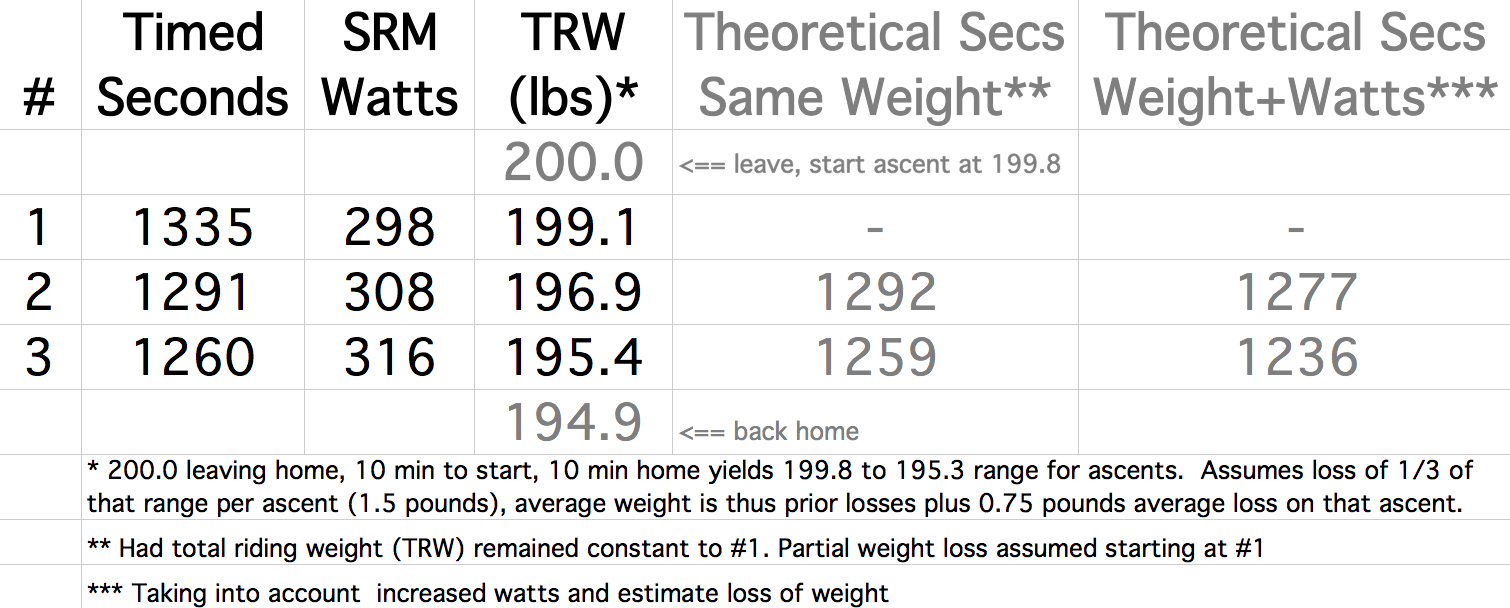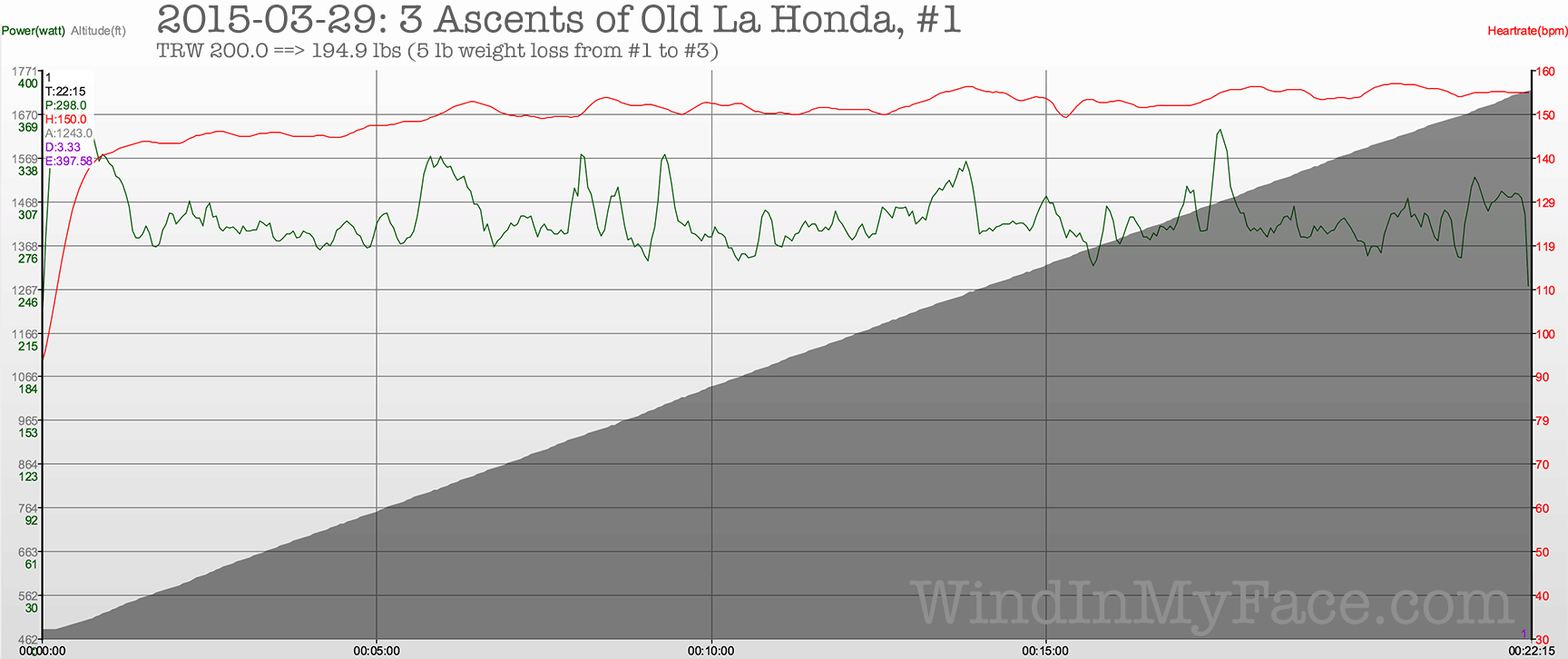Analyzing Power Meter Accuracy: Time vs Weight and Watts
See the workout graphs at bottom.
One (1) pound costs time of about 6 seconds on this ascent for a Total Riding Weight (TRW) of 200 pounds at 20:00 (1200 seconds), since 1 pound is 1/200 and thus 1/200 of 1200 is 6 seconds. We can discount this a little for friction, but hard data shows this to be a reasonable figure.
The 2nd and 3rd ascents are significantly slower than they ought to be, if the SRM power meter is accurate: the drop in riding weight and the increase in watts should deliver significantly lower times than actually measured. This implies that either the scale is inaccurate (provably accurate and precise both, over years!) or the SRM wattage is wrong.
In a nutshell:
- If total riding weight (TRW) drops by 2.3% (4.6 pounds as here), then the time should drop by about the same percentage for the same wattage (there are frictional forces , but these are all but identical for the negligible speed difference between ascents).
- If power (watts) increases by 6% (e.g., 316 vs 298 watts), then ascent time should drop by about the ratio of the two (298/316), assuming the same weight (the wattage numbers are 3.3% and 6.0% higher for the 2nd and 3rd ascents vs the first ascent).
The numbers don’t work: the combination of lower TRW and higher watts should have dropped the time significantly more (the time should have been 30 seconds faster on ascent #3).
The scale claims a weight loss of (200.0 to 194.9 pounds over a 2-hour workout. That’s a loss of 5.1 pounds = 2.5 pounds per hour, or about 1.16 liters of fluid lost per hour (1L = 2.2 pounds). That figure is inline with years of experience. Accounting for some fluid loss before and after the ascents, and taking the average weight based on that loss range yields the table below, which shows a significant discrepancy with the actual time.
SRM quotes 1% accuracy for the DA9000 power meter crankset, which is about 3 watts, or about 13 seconds on a 1300 second climb. But it should not accumulate with each ascent; the discrepancy is 24 seconds for ascent #3 (1260 seconds actual vs 1236 calculated).
Thus, the SRM power measurement seems to be out of range of the claimed 1% accuracy. Actual wattage must have been lower than recorded for ascents 2 and 3, since the times are slower than the time the watts would imply.

Mouse over to see ascents #1, #2, #2. These are “negative intervals” meaning that each successive effort is at a lower time.









